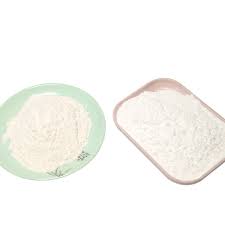
- +86-13363869198
- weimiaohb@126.com

Dec . 09, 2024 19:25 Back to list
Wholesale Amorolfine Hydrochloride CAS 78613-38-4 for Antifungal Treatments and Solutions
Exploring Amorolfine Hydrochloride Wholesale Insights
Amorolfine hydrochloride, with the CAS number 78613-38-4, is a prominent antifungal agent primarily used in the treatment of onychomycosis, a common fungal infection of the nails. This compound has gained significant traction in the pharmaceutical and dermatological markets due to its efficacy and safety profile. In this article, we'll explore the characteristics of amorolfine hydrochloride, its uses, and the dynamics of the wholesale market surrounding this important medication.
Composition and Mechanism of Action
Amorolfine is a morpholine derivative that works by inhibiting the growth of various fungi. Its mechanism of action includes blocking the synthesis of ergosterol, an essential component of fungal cell membranes. By interfering with ergosterol production, amorolfine disrupts the integrity of the fungal cell wall, ultimately leading to cell death. This antifungal property makes it a popular choice for treating fingernail and toenail infections caused primarily by dermatophytes and non-dermatophyte molds.
Clinical Applications
Amorolfine hydrochloride is available as a topical nail lacquer, making it a convenient option for patients. The lacquer formulation allows for direct application on the affected nails, ensuring high local concentrations of the drug where it is most needed while minimizing systemic exposure. The treatment is generally well-tolerated, with common side effects including skin irritation and allergic reactions, which are typically mild.
In clinical practice, amorolfine is considered an effective alternative to oral antifungal therapies, particularly for patients who may be contraindicated for systemic treatments due to pre-existing health conditions or potential drug interactions. Studies have shown that amorolfine's topical application can lead to significant clinical improvement and mycological cure rates when used consistently over several months.
Market Dynamics
The wholesale market for amorolfine hydrochloride is influenced by several factors, including demand from pharmacies, healthcare providers, and direct-to-consumer channels. As awareness of nail fungal infections rises, so does the need for accessible treatment options. This demand has led to an increase in the production and distribution of amorolfine-based products at wholesale levels.
wholesale amorolfine hydrochloride cas 78613-38-4

Wholesale distributors play a crucial role in ensuring that pharmacies and clinics have consistent access to amorolfine hydrochloride, especially in regions where the prevalence of fungal infections is higher. The wholesaling process requires careful attention to storage and transportation conditions, as antifungal medications must be protected from extreme temperatures and moisture to maintain their efficacy.
Regulatory Aspects
The regulation of amorolfine hydrochloride, like many pharmaceuticals, is stringent. Various countries have specific guidelines regarding the approval and distribution of antifungal agents. In the European Union, for example, amorolfine is available by prescription and is subject to rigorous quality control measures. Wholesale suppliers must comply with Good Distribution Practices (GDP) to ensure that the medication is stored, handled, and transported according to the highest pharmaceutical standards.
Future Perspectives
As the global healthcare landscape evolves, the market for antifungal treatments, including amorolfine hydrochloride, is expected to grow. Increasing investments in research and development could lead to new formulations and delivery methods that enhance the efficacy and convenience of treatment. Additionally, the rise of telemedicine is allowing for broader access to healthcare consultations, potentially increasing the diagnosis and treatment of onychomycosis.
The growing awareness of fungal infections, combined with an aging population more susceptible to such conditions, suggests a sustained demand for effective antifungal therapies. Wholesale suppliers that can adapt to these changing dynamics will be well-positioned to meet the needs of healthcare providers and patients alike.
Conclusion
Amorolfine hydrochloride stands out as a valuable tool in the realm of dermatological antifungal treatments. Its favorable safety and efficacy profiles, combined with the convenience of topical application, make it an attractive option for managing nail fungal infections. As the wholesale market continues to evolve, the emphasis on accessibility and quality assurance will be essential in ensuring that patients receive the care they need. The future of amorolfine hydrochloride in both clinical practice and the wholesale market appears robust, reflecting the ongoing importance of effective antifungal therapies in modern healthcare.
-
GHRP-2 (158861 67 7) Peptides for Fat & Muscle Gain
NewsAug.06,2025
-
GS-441524 for White Liquid Factories: Boost Efficiency & Purity
NewsAug.04,2025
-
Premium Pharma Intermediates | AI-Optimized Synthesis
NewsAug.03,2025
-
GS-441524 White Liquid Production for Factories | AI-Optimized
NewsAug.02,2025
-
AI-Optimized CAS: 79099-07-3 Factories for High Yield
NewsAug.01,2025
-
Pharmaceutical Intermediates - AI-Optimized Synthesis & Purity
NewsJul.31,2025